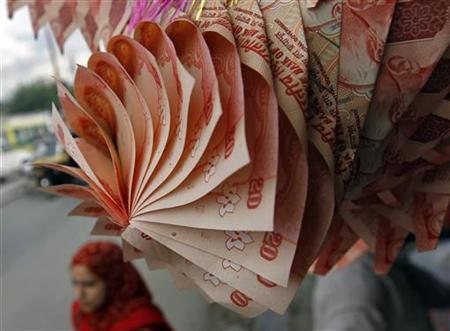Among other public service undertakings that are likely to raise money are Indian Railway Finance Corporation and National Highways Authority of India.

Considering the interest is entirely tax-free, the yields are attractive. But selling these bonds to benefit from capital gains, once interest rates go down, may be difficult. Although the bonds are listed on the exchanges, selling is not easy.
Of the total issue, 40 per cent or Rs 280 crore or Rs 2.80 billion is reserved for retail investors and 25 per cent or Rs 175 crore or Rs 1.75 billion is reserved for high net worth investors. The remaining is for companies and qualified institutional buyers. The interest rates for retail investors (those investing up to Rs 10 lakh) are 7.36 per cent for 10 years, 7.53 per cent for 15 years and 7.62 per cent for 20 years.
“For those who want to lock away money for the long-term, this is a good wealth accretion tool. The rates are better than bank fixed deposit, since it is tax-free,” says Jyotheesh Kumar, executive vice-president, HDFC securities.
The rates on one- to three-year bank deposits are currently between 7.75 and eight per cent. But for those in the 30 per cent tax bracket, the effective returns work out to between 5.4 per cent and 5.6 per cent. On the other hand, the returns on tax-free bonds will work out to 10.36 per cent to 10.62 per cent.
“Even for customers looking to book a yield for a long-term or looking for regular interest payments, it is a good opportunity. Investors should remember to re-invest the coupon payments to get compounding effect,” says Abhishake Mathur, senior vice-president, head-investment advisory services, ICICI Securities.
Rates on tax-free bonds are linked to government securities.
When g-sec rates come down, rates on tax-free bonds, too, will decline. The rates on issues that come out later during the year could be lower than what NTPC is offering now.
However, liquidity can be an issue.
When interest rates come down, investors can get capital appreciation as bond prices will go up.
But this is possible only if you sell the bonds in the market.
Although these bonds are listed, they are hardly traded. Individual investors might find it even more difficult to sell, since the lot sizes tend to be large.
Besides, capital gains tax applies in case you sell the bonds. In comparison, bank fixed deposits (FDs) or debt mutual funds are easier to liquidate.
“The bonds are tradable, so there will be an exit option and an opportunity to make capital gains as interest rates go down.
However, one has to be aware that exiting before maturity is not always advisable as it comes at a cost. The liquidity in these issues fall with time,” Mathur adds.
NTPC’s issue opens for subscription on September 23 and closes on 30. The allotment will be on a first-come first-served basis.
Subscription is available only in demat form. The minimum application is Rs 5,000.
Among other public service undertakings that are likely to raise money are Indian Railway Finance Corporation and National Highways Authority of India.